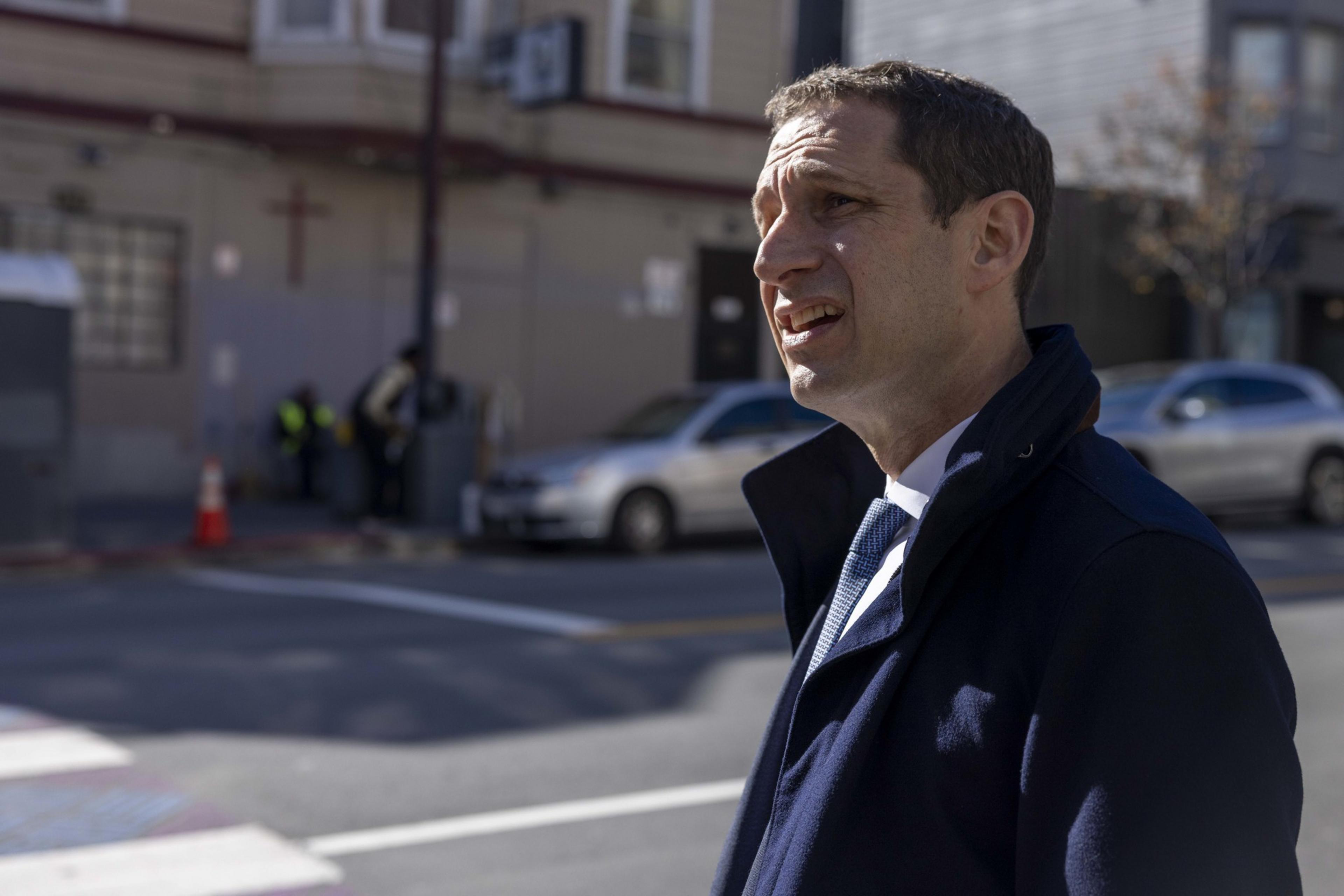Daniel Lurie repeatedly promised during his San Francisco mayoral campaign that he would put a massive dent in homelessness by building 1,500 shelter beds in six months.
By most accounts, it was Lurie’s signature policy proposal — and an audacious one that helped him claim victory in the November election. He repeated the 1,500-bed number in a March executive order (opens in new tab), and while he pushed the deadline back a couple months, he touted the goal again in May after raising almost $40 million from private donors.
Now, six months into the job, Lurie has a new plan: abandon the old plan.
The mayor’s office announced Saturday in the San Francisco Chronicle (opens in new tab) that it was scrapping Lurie’s 1,500 shelter bed goal and shifting its strategy on homelessness. Kunal Modi, the mayor’s top policy chief on homelessness, said the city’s money would be better spent fixing a broken system that fails to properly coordinate agencies and address the root causes of homelessness, such as drug addiction and mental health issues.
“As the mayor’s point person for the homelessness and behavioral health crises, I have been entrusted with making a range of systemic changes,” Modi wrote in a Tuesday op-ed for The Standard. “Now, after half a year on the job, I see that the best way to deliver on that mandate is by making our system more effective, not building toward a specific number of beds.”
Elizabeth Funk, CEO of the nonprofit DignityMoves and a Lurie campaign adviser on homelessness, previously told The Standard that the mayor’s vow to add 1,500 shelter beds and end unsheltered homelessness in six months was a “slip-up.” The mayor’s staff is now admitting his lofty goals were unachievable on all fronts.
Modi noted that a city review found San Francisco spends more than $1 billion a year to fund 25,000-plus beds. By that accounting, adding1,500 would cost at least $60 million.
Under Lurie, the city has opened — or announced plans for — at least 436 shelter, housing, and treatment beds, according to a review by The Standard. More than 300 of those beds qualify under Lurie’s expanded definition of a shelter bed, which includes drug and mental health treatment or recovery-focused shelter rather than strictly emergency housing. At least 68 were introduced under former Mayor London Breed.
However, San Francisco also has eliminated or marked for closure 241 shelter beds under Lurie’s watch, leaving the mayor with just 195 new or expected shelter beds to tout against his original 1,500-bed goal.
Modi said the city intends to examine services in congregate shelters, which are not designed to treat people with acute addiction issues, as well as in permanent supportive housing, where more than a quarter of the city’s overdose deaths occurred last year. Lurie’s administration also wants to update contracts with homeless nonprofit partners to create better accountability measures. In response to the February closure of Cova Hotel, a 116-person shelter in the Tenderloin, the mayor’s office said it would no longer throw “millions of dollars” toward “failing initiatives.”
The mayor’s office declined to make Lurie available for an interview.

Whit Guerrero, a member of the city’s Homelessness Oversight Commission, said he agrees with the mayor’s new approach of funding a range of beds but is concerned that Lurie championed an unfeasible benchmark from the start.
“We have to look at why the administration made a goal that was not based in reality,” Guerrero said. “My critique of this administration has been that I’ve seen very poor collaboration. It just seems like so many missed opportunities he had to get things on the right foot when people were really open to him.”
Margot Kushel, a homelessness researcher at UCSF, commended the administration’s revised approach but stressed that there remains a shortage of shelter beds — even as the city arrests people for repeatedly pitching tents on the street.
“If they can work on flow to get people out of shelters into housing, that obviously is another way to quickly create shelter capacity,” Kushel said. “But the bottom line is there aren’t enough beds.”
In 2023, Supervisor Rafael Mandelman called for an expansion of 2,000 shelter beds to address the homelessness crisis. Since then, Mandelman, now president of the board, has said his opinion on homelessness strategies has shifted, and he applauded Lurie for similarly changing his approach.
“Fixing what you’ve got before you expand is the right choice,” Mandelman said. “The responses to the addiction crisis are going to be different than an encampment problem on the street, so I’ve done a similar pivot.”
While Lurie’s pivot has earned some praise, it apparently confirms the long-held opinion of many observers that his campaign promise was a pipe dream. David Latterman, a political analyst in San Francisco, told The Standard it was simply a matter of time until Lurie “met reality” as mayor.
“No one ever took his number seriously. It’s like the city patted him on the head and said, ‘Good for you, young man,’” Latterman said. “Whether the city is forgiving depends on what he does next.”
